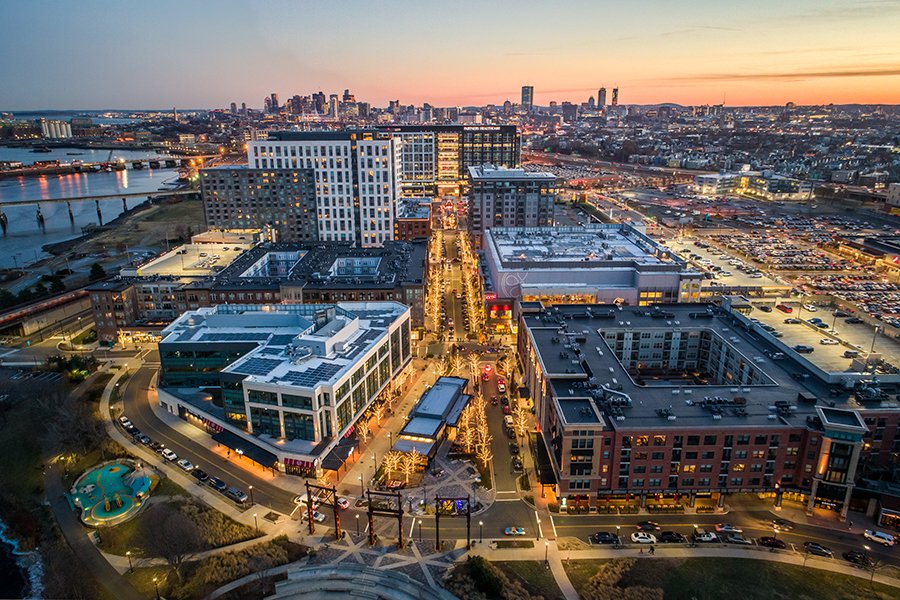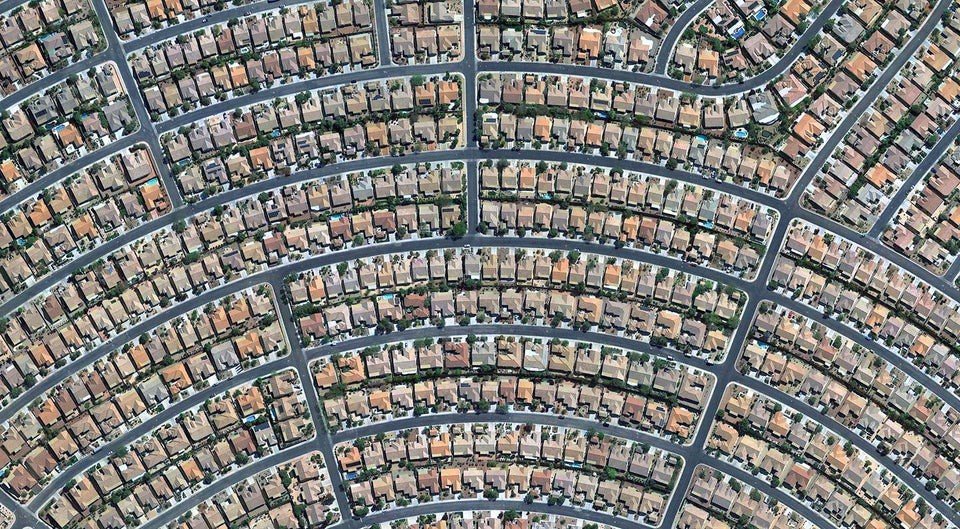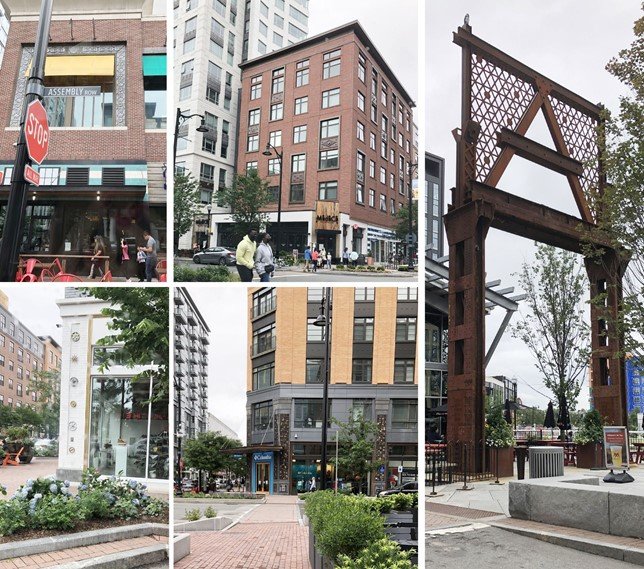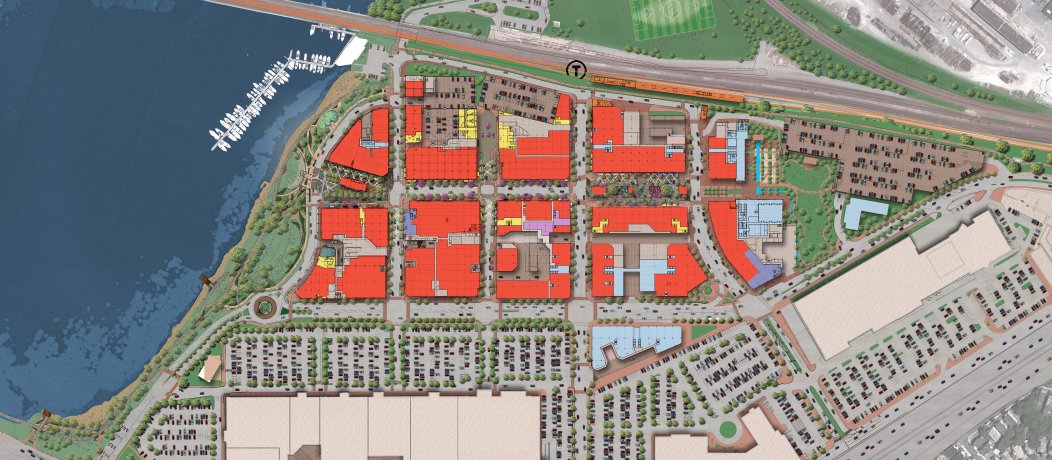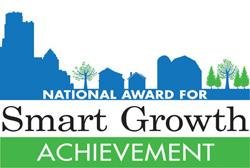Mixed-Use Developments and Smart Growth Cities
Assembly Row at Assembly Square
Prior to the mid-20th century, people lived in dense, city neighborhoods where each block was comprised of varied, mixed-use buildings. After World War II, the low cost of land and the baby boom led people to desire more space. Suburban subdivisions, which offered more square footage and outdoor space, with a short commute to the city became prominent and lured the middle class away from these dense, urban environments.
The exodus of people moving from city centers to suburban developments, a concept known as urban sprawl, had many downfalls. Typically, houses in these subdivisions were mass produced; quickly and cheaply built without attention to detail or design. As a result, these new neighborhoods lacked a sense of community distinctiveness and cohesiveness. Accessible only by car, suburban developments created a car-dependent society and led to higher amounts of air and water pollution along with increased traffic fatalities.
In the 1980s a new movement called New Urbanism arose as a response to the environmental problems and characterless, standardized design associated with urban sprawl. The movement's main concepts focused on creating architecture that builds a sense of community and the development of ecological practices.
New Urbanists believed that:
Neighborhoods should be diverse in use and population
Communities should be designed to be walkable and connected to mass transit in addition to being accessible by car
Urban places should be framed by architecture and landscape design that celebrate local history, climate, ecology, and building practice
The New Urbanist movement has evolved into the theory of “Smart Growth”, which concentrates new development in compact, urban centers to avoid sprawl. Smart growth cities strive to create a unique sense of community and place while offering an expanded range of transportation, employment, and housing choices. These cities seek to preserve and enhance natural and cultural resources while promoting public health.
A local example of a smart growth city development in Greater Boston is Assembly Square. Located along Route 93 in Somerville, Assembly Row at Assembly Square is a new urban village developed on a brownfield site formerly occupied by the Ford Motor Company plant until its closure in 1958.
Built in a series of phases, developers broke ground on the once blighted site in 2012 transforming 45 acres into a dynamic destination that offers first-class working, living, shopping, entertainment, and dining experiences to both residents and visitors.
The goal during master planning was to create a cohesive program and establish design principles that would give Assembly Row its character through thoughtfully designed streetscapes, public spaces, parkland, and building design. Regional inspiration was taken from Newbury Street in Boston, and used to create a rhythm and hierarchy of detail in the building facade design. Each block-long elevation was designed to encourage the appearance of multiple buildings through varied massing and diverse material quality.
Assembly Row features interconnecting, pedestrian friendly streets forming an inclusive neighborhood for residents. Direct access to Boston via the recently constructed Assembly Station along the MBTA Orange Line allows easy accessibility for visitors. Purposefully designed open space for public gatherings surrounded by distinct storefronts enhance the sense of community throughout the neighborhood. Assembly Row at Assembly Square has developed into a unique, intentionally designed mixed-use community that has enriched the city of Somerville.
Communities like these are prevalent all across the country. Some additional smart growth, mixed-use communities include Pike and Rose in North Bethesda, MD and Santana Row in San Jose, CA.
Interested in reading more? To learn more about smart growth development, check out this resource from the United States Environmental Protection Agency.
// did you know
Did you know that from 2002 to 2015, the EPA presented the National Award for Smart Growth Achievement to recognize and support communities that use innovative policies and strategies to strengthen their economies, provide housing and transportation choices, develop in ways that bring benefits to a wide range of residents, and protect the environment?

